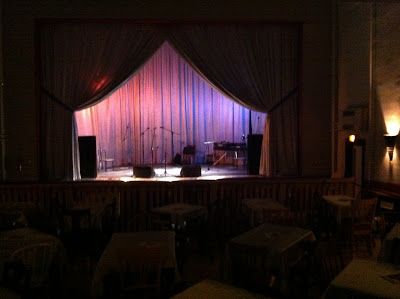This final semester I got to record and produce four songs written and performed by two different groups (two songs each).
The first group was a solo act (Grant Prusi), where he sung and played every instrument except bass. He did two songs that really started out as ideas he was playing with at the beginning of the semester. We spent the first month or so really just working on writing the songs and what they would be.
Opposition is an instrumental song that Grant originally wanted to be an industrial song, but he came up with a funk bass line so it kind of morphed into a funk song. Since Grant was playing most of the instruments he first had a midi demo of the song done and he practiced to that. When we came in to start laying down tracks the practice showed, he was able to play each of the instruments in time after only a couple of takes.
Down was recorded much like Opposition, except for the fact that vocals were added to the mix. They proved to be the biggest challenge
The second group was a full four piece band (called The Groundlings) and they did two songs that they have been playing for awhile now. The two songs sounded very similar initially so one (See You Through) was sped up to have a more upbeat rock feel. The second song (Save Me) was made into an acoustic song.
For See You Through the band was recorded live, all playing in the same room. It was just the best way, and then overdubs were added on top of that, though in most cases the live take was actually better than the overdub.
(Link to come)
To record Save Me a live take was recorded, then everything except drums was overdubbed on top of that. This was probably the hardest song to do because coming in See You Through and Save Me sounded almost identical. After trying out a lot of different versions of the song I heard DJ and Nick (the main singer/guitarist and the rhythm guitarist) doing a simple acoustic version and knew that was what it should sound like. So we scrapped everything we had recorded and rerecorded everything to build upon that acoustic version. I like this song the most, after spending so much time trying to get it right I think it turned out the best.























